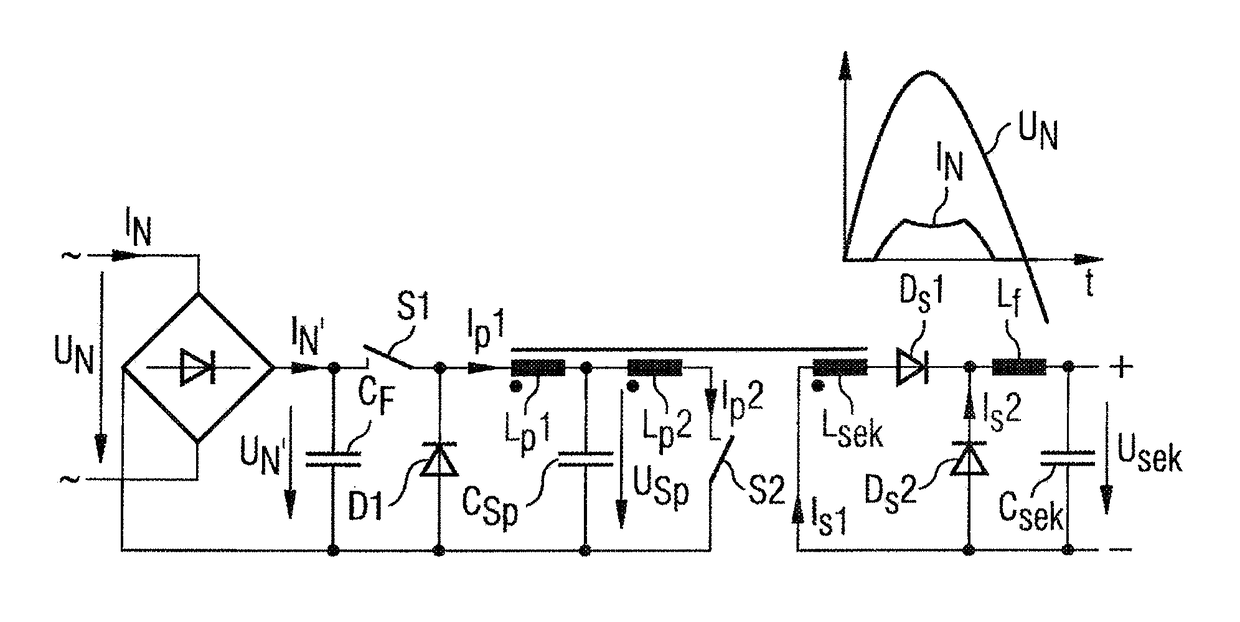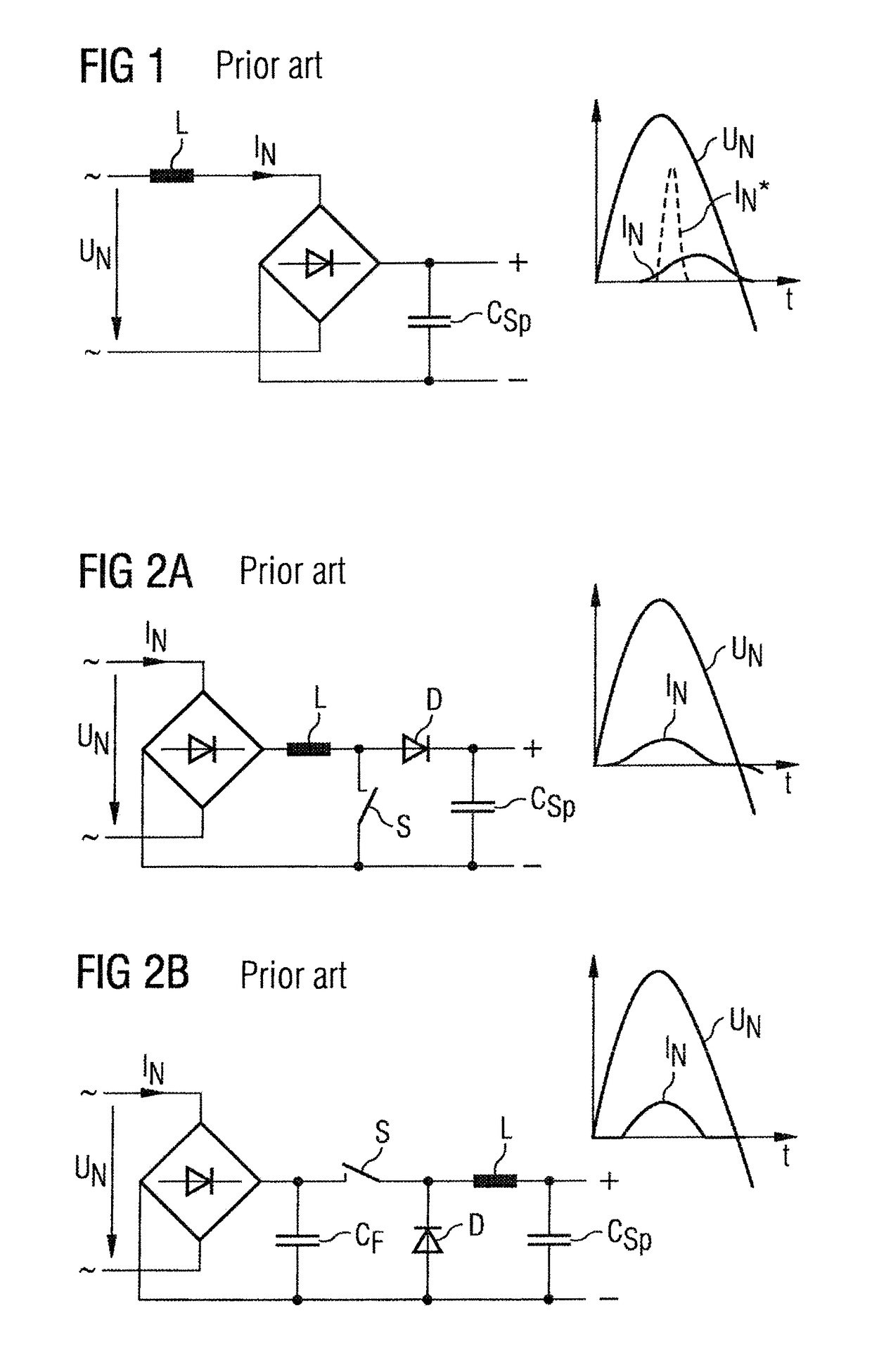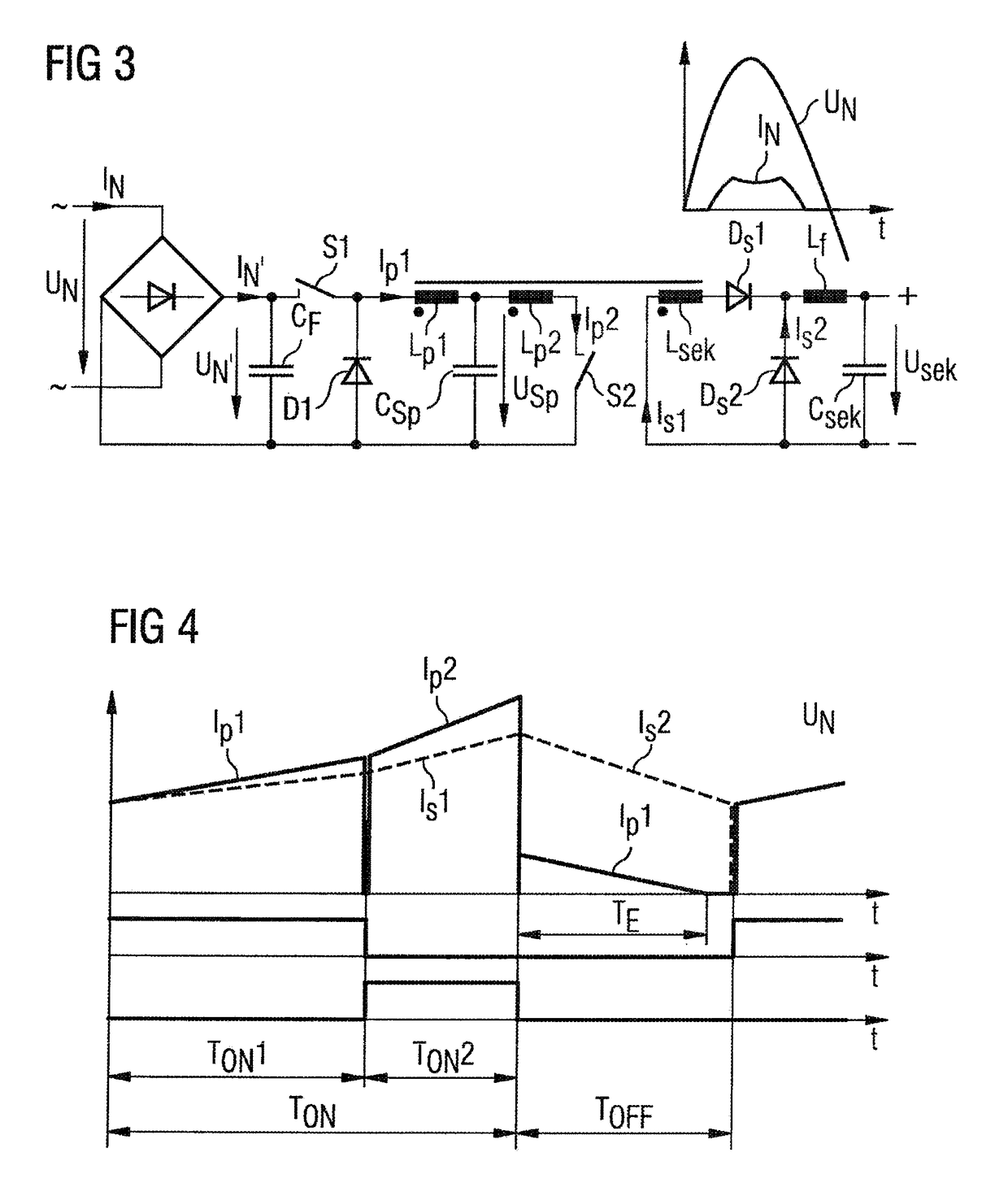Flux converter with power factor correction
a technology of power factor correction and converter, which is applied in the field of flux converter with power factor correction, can solve the problems of affecting the overall size and degree of efficiency, affecting the cost of power supply, and affecting the overall size and efficiency of the power supply,
- Summary
- Abstract
- Description
- Claims
- Application Information
AI Technical Summary
Benefits of technology
Problems solved by technology
Method used
Image
Examples
Embodiment Construction
[0041]FIGS. 1-3 show conventional PFC circuits which convert an AC input voltage into a DC voltage of an intermediate circuit. With regard to a passive circuit (FIG. 1), a sufficiently large inductance L is arranged upstream of a rectifier unit. The conduction angle is increased in this manner compared with the original current profile IN*, whereby a phase displacement however occurs which is to be taken into consideration.
[0042]The conventional active circuits (FIGS. 2a and 2b) comprise a clocked switch S by which it is possible to also influence the phasing of the current IN in addition to the conduction angle.
[0043]The flux converter illustrated in FIG. 3 comprises an input-side rectifier bridge which is connected to an AC voltage UN and converts an AC current IN into a rectified current IN′. Connected downstream of the rectifier bridge is a filter capacitor CF which is small in dimension in respect of the frequency of the AC voltage UN. This filter capacitor CF can advantageousl...
PUM
 Login to View More
Login to View More Abstract
Description
Claims
Application Information
 Login to View More
Login to View More - R&D
- Intellectual Property
- Life Sciences
- Materials
- Tech Scout
- Unparalleled Data Quality
- Higher Quality Content
- 60% Fewer Hallucinations
Browse by: Latest US Patents, China's latest patents, Technical Efficacy Thesaurus, Application Domain, Technology Topic, Popular Technical Reports.
© 2025 PatSnap. All rights reserved.Legal|Privacy policy|Modern Slavery Act Transparency Statement|Sitemap|About US| Contact US: help@patsnap.com



